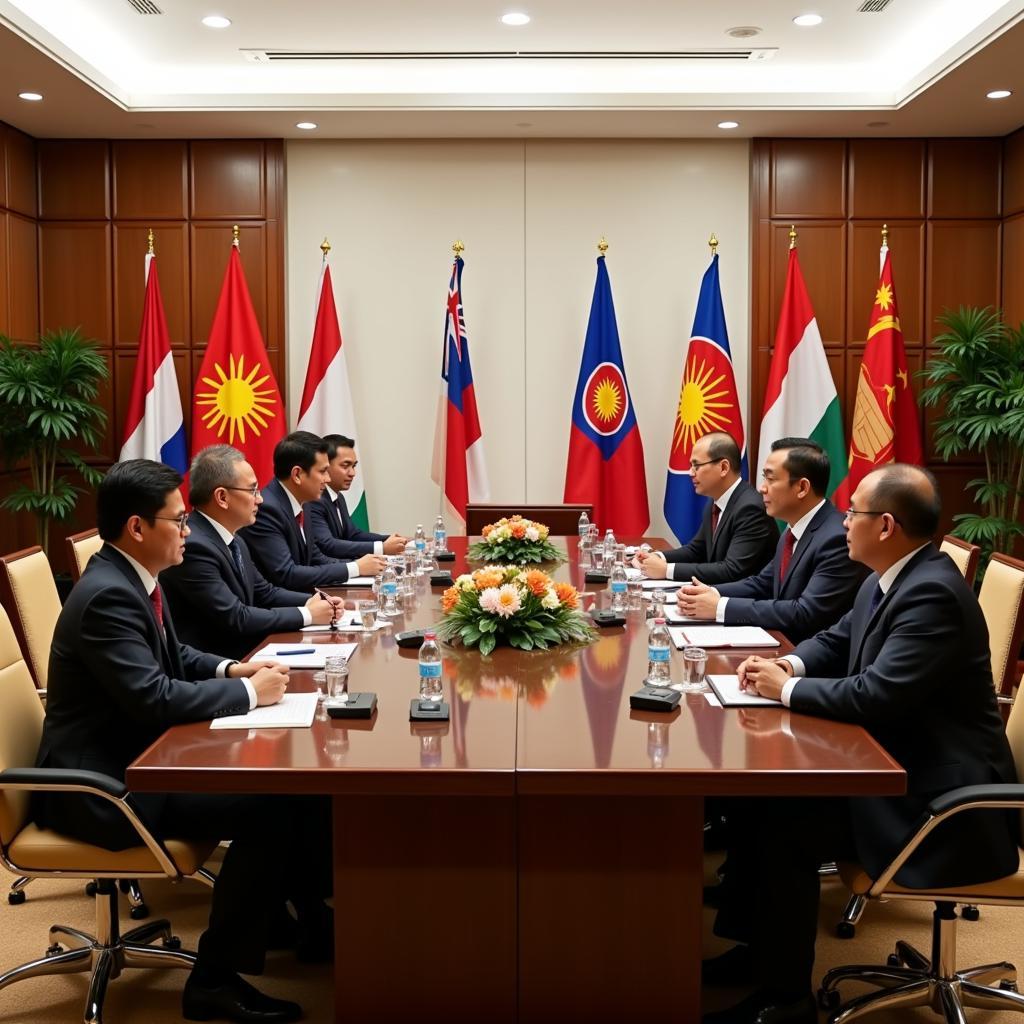ASEAN tying, a complex web of political, economic, and socio-cultural connections, shapes the Southeast Asian landscape. This article explores the multifaceted nature of these ties, examining their historical evolution, contemporary manifestations, and future implications for the region and the world.
ASEAN’s journey began in 1967, driven by a shared desire for peace and stability after a tumultuous period. The initial focus was on political cooperation, fostering dialogue and building trust among member states. Over the decades, this foundation has paved the way for deeper economic integration, exemplified by the ASEAN Free Trade Area (AFTA) and initiatives like the Regional Comprehensive Economic Partnership (RCEP). Beyond economics, ASEAN tying also encompasses a rich tapestry of cultural exchange, people-to-people connections, and shared values. This intricate interplay of factors is what defines ASEAN’s unique position on the global stage. Now, more than ever, understanding this dynamic is crucial.
Exploring the Dimensions of ASEAN Tying
ASEAN tying can be categorized into three key dimensions: political, economic, and socio-cultural. Each dimension plays a crucial role in shaping the region’s identity and trajectory.
Political Ties: Building Bridges of Cooperation
Political cooperation is a cornerstone of ASEAN. Member states engage in regular dialogue and consultations on various regional and international issues. This platform allows them to address shared challenges, such as transnational crime, terrorism, and maritime security, through collaborative efforts. The ASEAN Charter, adopted in 2007, further formalized the organization’s commitment to promoting peace, security, and good governance in the region.
 ASEAN Political Cooperation Summit
ASEAN Political Cooperation Summit
Economic Ties: Fostering Regional Prosperity
Economic integration has been a major driver of ASEAN tying. AFTA has significantly reduced trade barriers among member states, boosting intra-regional trade and investment. The RCEP, which includes ASEAN and several other major economies, further expands this network of economic cooperation. These agreements have facilitated the flow of goods, services, and investments, contributing to the region’s economic growth and development.
Socio-Cultural Ties: Celebrating Shared Heritage
Beyond political and economic considerations, ASEAN tying is deeply rooted in the region’s rich cultural heritage. People-to-people connections are fostered through educational exchanges, cultural festivals, and tourism. These interactions promote mutual understanding, appreciation, and respect for the diversity of cultures within ASEAN.
1. best glide ase survival fishing kit
The Future of ASEAN Tying
ASEAN tying is not static; it continues to evolve in response to regional and global dynamics. The rise of new technologies, climate change, and geopolitical shifts present both challenges and opportunities for the region. ASEAN must adapt and innovate to strengthen its ties and maintain its relevance in a rapidly changing world.
Navigating Global Challenges through Collaboration
ASEAN has demonstrated its ability to address shared challenges through collaborative efforts. By pooling resources and expertise, member states can effectively respond to issues like pandemics, natural disasters, and cybersecurity threats. This collaborative approach will be essential in navigating future uncertainties and ensuring the region’s resilience.
Embracing Innovation for a Sustainable Future
Innovation is crucial for ASEAN’s future growth and development. By fostering a culture of innovation and entrepreneurship, the region can unlock new opportunities in areas like digital technology, renewable energy, and sustainable agriculture. This will contribute to economic diversification, job creation, and a more sustainable future for ASEAN.
Strengthening Regional Identity in a Globalized World
As globalization intensifies, ASEAN faces the challenge of maintaining its unique regional identity. It is essential to strike a balance between integrating with the global economy and preserving the region’s cultural heritage and values. By promoting ASEAN awareness and fostering a sense of belonging, member states can strengthen their collective identity and enhance their influence on the world stage.
adecco necesita auxiliar de aseo oficina
Conclusion
ASEAN tying is a testament to the power of regional cooperation. By forging strong political, economic, and socio-cultural ties, ASEAN has achieved remarkable progress in promoting peace, stability, and prosperity in Southeast Asia. As the region navigates the complexities of the 21st century, ASEAN tying will continue to be a vital force in shaping its future and its place in the global community.
FAQ
- What is the primary goal of ASEAN tying?
- How does ASEAN tying benefit member states?
- What are the key challenges facing ASEAN tying?
- How does ASEAN promote cultural exchange among its members?
- What role does ASEAN play in global affairs?
- How does ASEAN address issues of regional security?
- What is the future outlook for ASEAN tying?
When you need support, please contact Phone Number: 0369020373, Email: [email protected] Or visit the address: Ngoc Lien Village, Hiep Hoa, Bac Giang, Vietnam. We have a 24/7 customer support team.


